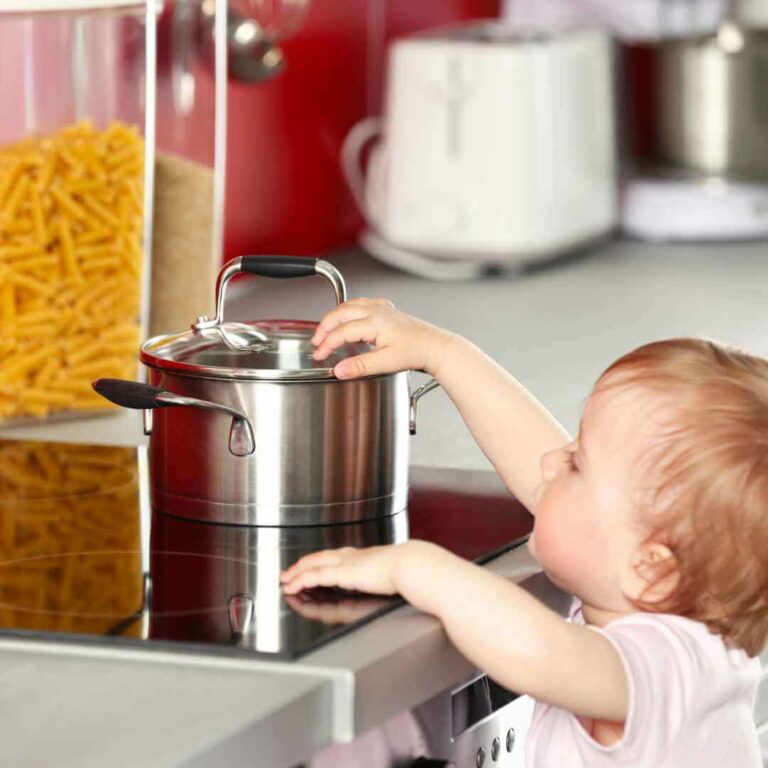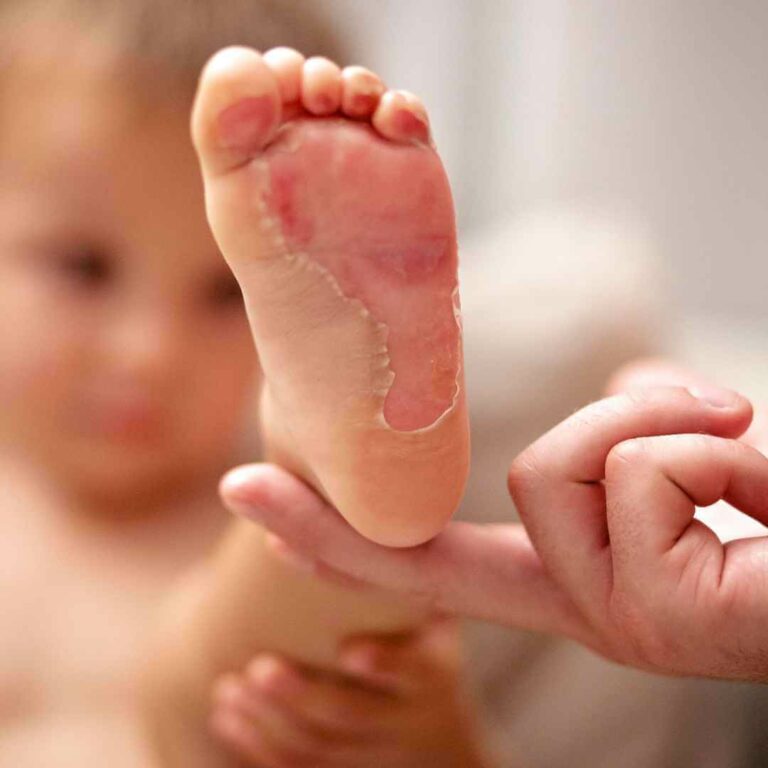Baby First Aid For Burns

In June every year, it’s Burns Awareness Month and it aims to drive greater awareness amongst the Australian community of burns prevention and the correct baby first aid treatment for burns, especially to little people.
We are also seeing more accidents in the home (or just outside them), with
- 33% of the burn injuries presenting to hospital being children aged 1-2 years.
- Scalds account for nearly 60% of burns in children, which is not surprising.
- 79% of burn injuries occur in the home.
- 50% of children are burnt in the kitchen
- Flame burns are more common in the 11-15 age group
In this post we are talking about burns and how to treat them.
Kids are curious, small and have the type of skin that needs extra protection. Children’s skin burns more easily than adults.
Burns are a major cause of injury in children, especially those aged between 1 – 2 years, due to their sudden ability to mobilise and investigate!
Did you know…
At 60 ºC, it takes one second for hot water to cause third-degree burns.
At 55 ºC, it takes 10 seconds for hot water to cause third-degree burns.
At 50 ºC, it takes five minutes for hot water to cause third-degree burns.
You can set your hot water heater to 120℉ or 49℃, this will minimise the risk of burns when they accidently turn on the tap or jump in the bath before you’ve checked it.

The steps of baby first aid for burns
Below are the steps you would need to take if your child sustains a burn.
Treatment is the same for all burns:
- As soon as possible, hold the burn under cool running water for 20 minutes only
- Remove clothing or jewellery that is not stuck to the burn
- Keep your child as warm and just target the burn with the cool water
You should seek medical help immediately if:
- The burn is deep, even if your child does not feel any pain
- The burn is larger than 3 cm & has blisters
- The burn is on the face, hands or genitals
- The burn is to the throat or airway
Cover the burn with a loose, non-stick dressing. This can be a sterile non-stick dressing or cling film until your child is seen by a doctor. (However, do not keep plastic cling film on for more than an hour)
Why cling film for burns?
Cling film is great because:
- It stops as much oxygen getting to the burn which makes it less painful
- It protects the burn from infection
- it is clear so that you can visualise the burn
- it is easy to remove without causing any further damage to the skin.
Do Not Use Ice! This can dangerously drop the child’s temperature and make the burn worse.
Is moisturiser good for burns?
Never apply lotions or creams (unless your Dr or pharmacist has given you a specific burn cream), this can trap the heat in the burn.

We talk about the criteria for calling an ambulance for burns in our child and infant CPR classes.
How can we prevent burns in children?
- Keep cups of hot drinks out of reach of children.
- Install a barrier to the kitchen to keep young children away from cooking areas.
- Place appliance cords and saucepan handles towards the back of benches, tables and stoves.
- Keep kettles, jugs and teapots away from the edge of benches or tables.
- Do not move pots of hot oil or water across the kitchen.
- Place the microwave out of reach of young children but at a chest height for adults.
- Check the temperature of food cooked in a microwave after it has been stirred before eating.
- Spend time with your child teaching them basic kitchen safety.
- This can be done using toy kitchen sets or while cooking together.
- Purchase and use oven mitts.
- Keep a fire blanket and fire extinguisher near the kitchen and easily accessible.
Baby CPR Course
Learning first aid for parents should be a staple part of early parenthood. We think it should be part of antenatal training as children are unpredictable. They present with illness very differently to adults and react differently to trauma.
Take a look at our classes today, both in person and online.
Want more? We’ve got you covered…
Our Baby First Aid Courses
Our baby first aid courses are available in person in your home and online. We run classes in your home with groups of 2, 4 or up to 10 in Sydney & Melbourne and you can book in 3 easy steps!
- Pick your class
- Follow the prompts to purchase
- We will contact you within 24 hours to lock in your date of choice
Our First Aid Certificate Courses
We run most of the popular first aid courses Australia wide. HLTAID011 Provide First Aid, HLTAID009 Provide CPR, HLTAID012 Provide First Aid in an Education & Care Setting, RAMOAP (anaphylaxis), Mental Health first aid and CPR/LVR to name a few.
Book your public spot online or contact us if you have a group of 5+ people for onsite training.
Here are some other resources you may enjoy!
FREE GUIDE: Your Virtual Baby First Aid Kit
FREE GUIDE: Introducing Common Allergy Foods & Allergic Reactions
FREE Workplace Emergency Preparedness Plan: Grab this at the bottom of every page!
Follow for baby & child first aid and allergy info and tips on Instagram, TikTok & Facebook all @thenestcpr
